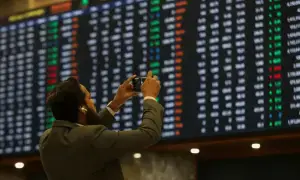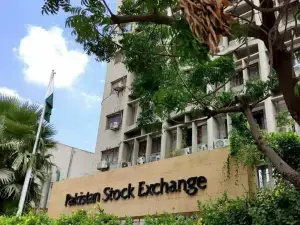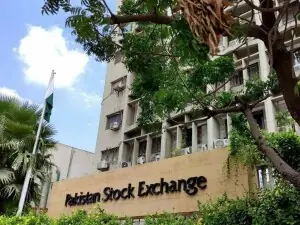The euro hit a 14-month high against the US dollar and 33-month peak against the yen on Friday, the beneficiary of stronger-than-forecast euro zone manufacturing data and expectations of easy monetary policy from Washington and Tokyo. Friday's US jobs data reaffirmed expectations the US Federal Reserve will maintain its stimulative monetary policy, thereby making the greenback less desirable.
--- Euro lifted by better-than-forecast eurozone PMI
--- Yen continues weakening trend on BoJ easing view
Bets the Bank of Japan will ease its monetary policy further extended the yen's downturn, putting it at a 2-1/2-year low against the US dollar. "The euro has been bid for the last month on reduced tail risks in the euro zone and a shrinking balance sheet of the European Central Bank is pushing short-term rates higher as a result. Everywhere else people are printing money, so on a relative basis, the ECB is tighter," said Greg Anderson, currency strategist at CitiFX in New York.
A rally in US stocks added to the momentum as investors shed the safe-haven Japanese currency, and despite its modest economic growth, made the euro more attractive on a relative basis. The US economy added 157,000 jobs last month, the Labour Department said, slightly below market expectations and the unemployment rate edged up to 7.9 percent. But job growth in the previous two months was revised higher.
"The latest data is a great mix for a broadening of the 'risk on' trade, with solid payrolls data showing underlying growth was robust into the fiscal cliff," said Alan Ruskin, head of G10 FX strategy at Deutsche Bank in New York. "The rise in the unemployment rate should (be) more friendly for all trades that were fearful of an early Fed withdrawal from QE.
"In sum, for FX nothing to detract from the long euro trade." He added the data should also weigh on the dollar, with the exception of dollar/yen. The euro rose as high as $1.3711, its strongest since mid-November 2011. It was last at $1.3643, up 0.48 percent on the day. On the week, the euro gained about 1.4 percent versus the dollar. Further upside targets are seen at $1.3833-35, the 61.8 percent retracement of the move down from May 2011 to July 2012, which also coincides with the July 2011 low. A break of that area opens the door to a rise toward $1.40.
"The main takeaway from the jobs report is that there's no major acceleration or deterioration in the labour market, so that keeps the Fed firmly on hold," said Kathy Lien, managing director BK Asset Management in New York. The Fed repeated Wednesday that it would keep overnight rates near zero until the unemployment rate hits 6.5 percent, as long as inflation does not threaten to exceed 2.5 percent.
The Fed's bond-buying and loose monetary policies have pressured the dollar, and analysts said the dollar will maintain a negative bias as long as the US central bank continues on that path. The dollar rose 1 percent to 92.70 yen, just off a session high 92.96 yen late in New York trade. This is the greenback's best level against the yen since May 2010. For the week, the dollar rose 2 percent and after 12 straight weeks of gains is up 16.6 percent on the Japanese currency.
The dollar extended gains versus the yen after US data showed the pace of manufacturing growth picked up in January to its highest level in nine months, while consumer sentiment unexpectedly improved in January. Selling the yen has become a one-way bet, with Japanese Prime Minister Shinzo Abe heaping relentless pressure on the Bank of Japan to ease monetary policy aggressively to jolt the economy out of a decade-long malaise.
The euro rose as high as 126.96 yen, the best level since April 2010, and was last up 1.81 percent at 126.75 yen. News that banks will repay less than expected in European Central Bank three-year loans next week dented some demand for the euro, but losses were limited by optimism the worst of the region's debt crisis is over.
Earlier, a Purchasing Managers' Index survey showed euro zone factories had their most resilient month in nearly a year during January, helped by solid German output. The euro surged to a 15-month high against the pound, with a gain of 1.5 percent to 0.8692 pence which marked the best single-day gain since October 2009. CitiFX's Anderson noted the rise was fuelled by both the euro zone manufacturing data and next Thursday's testimony of incoming Bank of England head Mark Carney before Parliament's Treasury Committee.
If Carney advocates for a target range on inflation of 1 to 3 percent rather than a hard 2 percent target currently, that would give the BoE more room to ease monetary policy and debase the pound. "The BoE has a bad reputation for sticking to its inflation target. If he says he's in favour of a 1 to 3 percent range that could lead to more euro/sterling buying. It's gone to the moon already, but it might now go to the sun," said Anderson.
BR100
16,307
Increased By
236.2 (1.47%)
BR30
51,537
Increased By
1163.4 (2.31%)
KSE100
157,953
Increased By
1775.7 (1.14%)
KSE30
48,199
Increased By
520.5 (1.09%)






















Comments
Comments are closed.